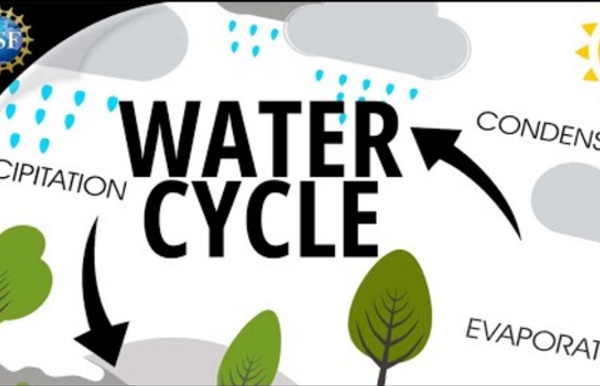



http://www.youtube.com/watch?v=al-do-HGuIk
Related: HIDRÓSFERA • Rivers and floodsFlooding and Climate Change: Everything You Need to Know Jump to Section Floods are the most common (and among the most deadly) natural disasters in the United States. They have brought destruction to every state and nearly every county, and in many areas they are getting worse. As global warming continues to exacerbate sea level rise and extreme weather, our nation’s floodplains are expected to grow by approximately 45 percent by century’s end. Numbers and Measuring © 2019 WGBH Educational Foundation. All rights reserved. Peep and the Big Wide World and the Peep characters and related indicia are trademarks of WGBH Educational Foundation. All third party trademarks are the property of their respective owners.
Earth's Freshwater Future: Extremes of Flood and Drought By Ellen Gray, NASA's Earth Science News Team, and Jessica Merzdorf, NASA's Goddard Space Flight Center This article is part of a series that explores NASA research into Earth's fresh water and surveys how those advances help people solve real world problems. Learn more. NASA satellites are a prominent tool for accounting for water, as it constantly cycles from water vapor to rain and snow falling onto soils, and across and beneath the landscape. As Earth’s atmosphere warms due to greenhouse gases and the satellite data record continues to get longer and more detailed, scientists are studying how climate change is affecting the distribution of water.
The Old Farmer's Almanac for Kids By the rude bridge that arched the flood, Their flag to April’s breeze unfurled, Here once the embattled farmers stood, And fired the shot heard round the world. –Ralph Waldo Emerson, from “Concord Hymn” Patriots Day commemorates the events of April 19, 1775, that marked the start of the American Revolutionary War, especially the midnight rides of Paul Revere and others to warn of approaching British troops, and the battles of Lexington and Concord.
Climate change is increasing flood risks in Europe As humans continue to emit greenhouse gases like carbon dioxide, the world continues to warm. We see that warming everywhere – in the atmosphere, in the oceans, with rising sea levels, and melting ice. But while we know conclusively that humans are causing the warming, an equally important question is, “so what?” Really, we want to know the consequences of warming so that we can make informed decisions about what to do about it.
Flood Control - Stadt Leipzig Flood Control Management in Leipzig Situated at the intersection of three rivers, the Weiße Elster, Pleiße and Parthe, Leipzig has always been vulnerable to the danger of flooding. To combat this danger, the river beds have been expanded and mechanical flood control and diversion systems have been installed. Maps of Leipzig's flood hazard areas along the Weiße Elster and Parthe can be viewed at the Office of Environmental Protection. The countries hit hardest by extreme weather Nikolay Doychinov | AFP | Getty Images An historic agreement may have been reached at the United Nations Climate Change conference in Paris late last year, but that could prove too late for some countries. Sustainable Energy has taken a look at international think tank Germanwatch’s Global Climate Risk Index for 2016, part of which profiles the countries most affected by “extreme weather events” in 2014.
More storms and flooding: How we′ll need to adapt to extreme weather Deutsche Welle: France has declared a state of natural disaster in some areas, people have had to be evacuated from Germany, some people have died as a result of the storms and flooding here. Is this a taste of more to come? Maarten van Aalst: In general, we are seeing an increase around the world of the risk of a range of types of extremes, including rainfall extremes that may cause flooding events like what we have here. Global warming poses substantial flood risk increase for Central and Western Europe Europe is expected to see a considerable increase in flood risk in coming years, even under an optimistic climate change scenario of 1.5°C warming compared to pre-industrial levels. A study assesses flood impacts for three scenarios – of 1.5°C, 2°C and 3°C warming – and finds that most of Central and Western Europe will experience substantial increase in flood risk at all warming levels, and the higher the warming, the higher the risk. Damage from floods across Europe is projected to more than double, from a 113% average increase if warming is kept to 1.5°C, to 145% under the 3°C scenario. In terms of population affected, the projected increase ranges from 86% to 123%. While the pattern for Central and Western Europe was one of a consistent increase in flood risk, the study also found that flood risk may actually decrease with warmer temperatures in some countries in Eastern Europe, but those results also show a high degree of uncertainty.
Chlorophyll : Global Maps Download a Quicktime animation of this dataset (7 MB) At the base of the ocean food web are single-celled algae and other plant-like organisms known as phytoplankton. Like plants on land, phytoplankton use chlorophyll and other light-harvesting pigments to carry out photosynthesis, absorbing atmospheric carbon dioxide to produce sugars for fuel. Chlorophyll in the water changes the way it reflects and absorbs sunlight, allowing scientists to map the amount and location of phytoplankton. Climate change and flood risk in European cities The map is one example of the capabilities of Eye on Earth, an online mapping tool created by the EEA and partners. From 4 to 6 March 2013 the EEA is organising the First Eye on Earth User Conference in Dublin, Ireland. The event will bring together people with a common interest in sharing environmental data and information for public access.
El video será utilizado para alumnos del profesorado y traducido por mi en el momento. Obviamente este video no es para niños de EP by mghost Jun 14